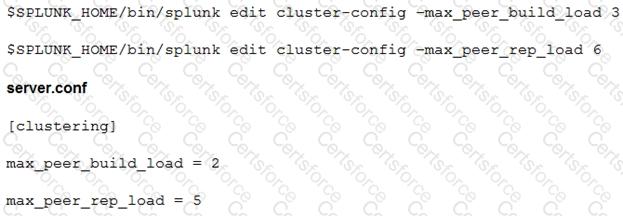A customer wants to migrate from using Splunk local accounts to use Active Directory with LDAP for their Splunk user accounts instead. Which configuration files must be modified to connect to an Active Directory LDAP provider?
What is the default push mode for a search head cluster deployer app configuration bundle?
What should be considered when running the following CLI commands with a goal of accelerating an index cluster migration to new hardware?

The data in Splunk is now subject to auditing and compliance controls. A customer would like to ensure that at least one year of logs are retained for both Windows and Firewall events. What data retention controls must be configured?
A customer is migrating their existing Splunk Indexer from an old set of hardware to a new set of indexers. What is the earliest method to migrate the system?
The universal forwarder (UF) should be used whenever possible, as it is smaller and more efficient. In which of the following scenarios would a heavy forwarder (HF) be a more appropriate choice?
A customer is using regex to whitelist access logs and secure logs from a web server, but only the access logs are being ingested. Which troubleshooting resource would provide insight into why the secure logs are not being ingested?
In an environment that has Indexer Clustering, the Monitoring Console (MC) provides dashboards to monitor environment health. As the environment grows over time and new indexers are added, which steps would ensure the MC is aware of the additional indexers?
Where does the bloom filter reside?
A working search head cluster has been set up and used for 6 months with just the native/local Splunk user authentication method. In order to integrate the search heads with an external Active Directory server using LDAP, which of the following statements represents the most appropriate method to deploy the configuration to the servers?